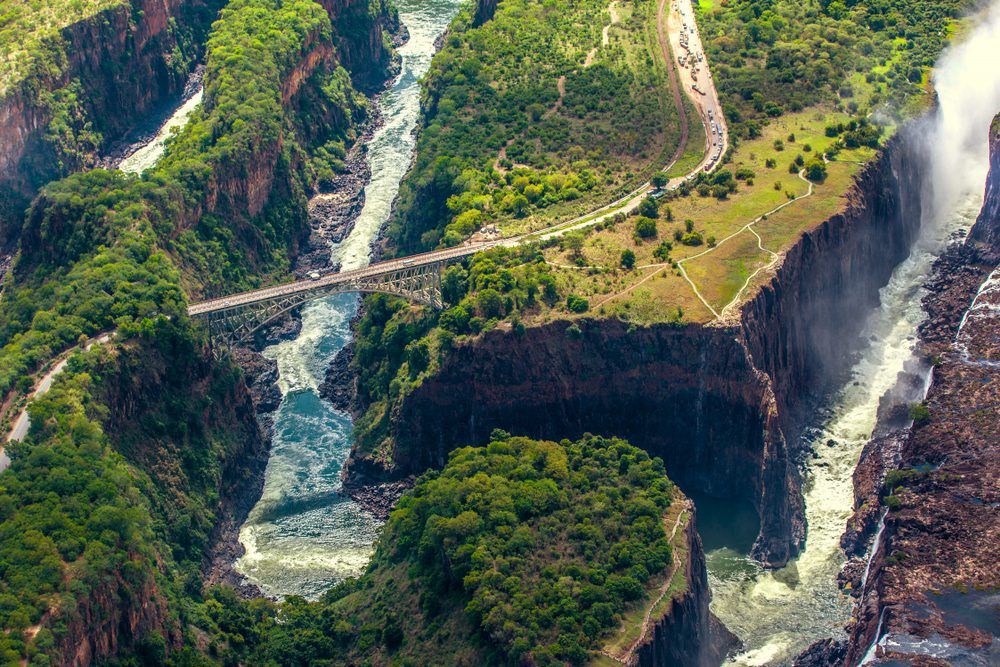
HAD A VISITOR IN 1958 STOOD ON THE CREST OF BUMI HILLS and peered out through a pair of binoculars, they might have been distracted by the sight of a bare-chested man in a floppy hat attempting to strap an elephant to a wooden raft, Rupert Fothergill was chief game ranger of what was then Rhodesia, now northern Zimbabwe, and charged with relocating wildlife stranded by the rising waters of the newly created Lake Kariba. Grainy footage of the time shows him contending with a number of irregular predicaments: shoulder-deep in water and clutching a wriggling, rabbit-like hyrax in his arms; casually attempting to shoo away a rhino with a wave or two of his hat; and hoisting a bedraggled baboon into a boat by its shoulders.
By the time ‘Operation Noah’ was wound down in 1964, Fothergill and his team had saved over 6,000 animals. Today, horn the vantage point of Bumi, Kariba looks more sea than lake. On the shore, small herds of elephant, buffalo and hippo graze on the jewel-bright grass. Straight ahead, the crumpled, grey hills of Zambia are just visible, but there’s nothing but water to the horizon left and right; the weekly car fern? that traces a steady line through the waves east to west will take a full 24-hours to complete its journey. Over 50 years since it was created, Kariba remains the world’s largest man-made lake. And yet it is seen by some as a temporary blip, one likely to disappear before too long.
In the mythology of the region’s Tonga people, the Zambezi is home to the river god Nyami Nyami. A giant dragon, with the body of a serpent and the head of a fish, Nyami Nyami provides for the Tonga when times are hard. In 1957 and 1958, Zimbabwe suffered the worst floods it had seen in recorded history, twice sweeping away the wall being built to create Lake Kariba. Nyami Nyami is angry, said the Tonga, he does not want the dam. Sightings of a 200-metre-long beast weaving through the lake are still reported in the local papers, and the region’s earthquakes are attributed to the monster crashing against the dam, attempting to reach his wife stranded on the other side.
Local guide Student Muroyiwa grew up with these stories. In clothes with which Fothergill would be well familiar (crisply ironed safari shorts and shirt), he steers his boat among the treetops. Their blackened branches poking out of the water like macabre fingers, the trees are all that re main of a mopane forest that once carpeted the Kariba gorge, lost when the Zambezi was dammed. Cormoran ts settle on their branches, taking to the air only to dip suddenly beneath the surface, while swallows fresh from their summer breaks in Europe hoover up insects above it. Student points to an island named after the last human to leave the valley as the waters rose around him. ‘Mola believed in Nyami Nyami and he knew he didn’t want the dam.
“There’s noway the water will get to my doorstep,” said Mola. But the water started carrying and coming and it came right into his house,’ explains Student. ‘In the end, he just got into his canoe and paddled away.’ Student’s mother Unarie was another who left when the lake was formed, walking 12 miles inland to the resettlement village that was to be the Tongas’ new home. She sits in the shade of her mud-brick house, its roof thatched with bluegrass, tin pots drying in the sun outside. Tomatoes, sweet potatoes, okra and maize grow in the small plots tended by her family. At the edge of their cluster of huts, a look-out tower stands empty; as soon as night falls, one of her grandchildren will climb up and keep watch for marauding lions, hyenas and elephants. ‘I am too old to go to the lake now’, says Unarie, hut my life in the old village was perfect. I never saw Nyami Nyami but I would be more than happy if he wanted to break the wall.’






